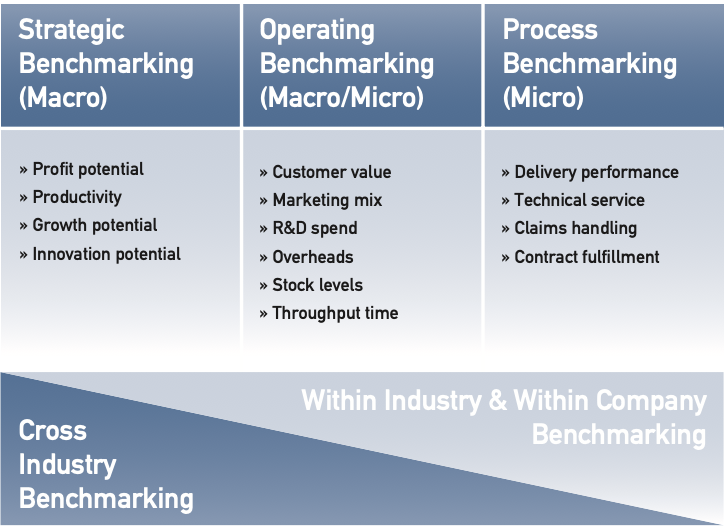
In the post-Covid world, industries and business models are transforming at breakneck speed. But the faster you go, the more important it is to have a reliable navigation system. For over four decades, PIMS (Profit Impact of Market Strategy) has scientifically investigated the time-independent factors behind companies’ successful performance. What used to be, without PIMS, a combination of guesswork, individual experience, intuition and continuation of past practice, becomes, with PIMS, a precisely piloted flight using the latest satellite navigation.
PIMS – market leader in evidence based performance improvement
The knowledge and the results of analysis of thousands of business units from across all sectors are held within our cross-industry and industry specific databases at our customers’ disposal.
PIMS uses this unique source of empirical evidence to map out appropriate strategies, benchmarking performances and delivering results. We have evolved from a multi-company research programme under the wing of Harvard Business School to a centre of expertise within Switzerland’s top Management Centre, advising companies around the world.
Working with PIMS we derived a number of indicators and targets that give us the qualitative and quantitative position of the business performance we need.”
CTO, Major IT Company
A hierarchy of Benchmarking
An effective starting point for performance improvement is to start with a good understanding of a business’s strengths and weaknesses via ‘macro’ benchmarks. Then you can direct process benchmarking at the ‘micro’ level at the areas with greatest leverage.
While a ‘micro’ focus on discrete processes can provide a deep understanding of what’s needed to create superior performance, it can present practical problems. It can be very costly and time-consuming – there are literally thousands of ‘micro’ benchmarks that apply to the many processes constituting a business, e.g. cost per invoice, best practice time for tool changeover, marketing cost per customer order, etc.
Many processes you can benchmark may be unimportant, redundant or in need of major re-engineering. Benchmarking these things may be motivating to those who carry out the task, but less useful to the business as a whole.
One way to avoid this kind of mistake is to adopt a hierarchy in benchmarking: start at the business unit level with ‘strategic’ benchmarking and ‘operational’ benchmarking; then use the insight gained to focus on the processes vital to competitive success.

From PIMS evidence and experience they were able to demonstrate convincingly that our planned increase in marketing expenditure was both needed and justified. What’s more, PIMS helped us prioritise key action areas which would further improve customers perceptions of the quality and value of our product.
CEO, Dairy Company
PIMS invented evidence based strategy for business in the 1980s, and contributed much to development of evidence based policy for government in the 1990s. Its approach and methodology lies behind much 21st century economic and business research to build the knowledge economy for tomorrow.
Director Economic Analysis, Office for National Statistics
Applications
We work closely with our clients to identify appropriate benchmarks for performance improvement; helping you establish best practice. PIMS always quantifies the potential payback of the improvement opportunities that we find; helping you prioritise your actions.
| Type of Benchmarking | Applications |
|---|---|
| Within Industry Benchmarking |
Is best when:
PIMS® EXPERIENCE includes: Lubricants – technology and production, Pharmaceuticals – production and marketing, Fuels retail networks, Energy suppliers, Agrochemicals, Private banking, Branded consumer goods, Telecoms |
| Cross Industry Benchmarking |
Is best when:
PIMS® Experience includes: Procurement, Finance, HR, Marketing, R&D, Profit Impact of Market Strategy |
| Within Company Benchmarking |
Is best when:
PIMS® EXPERIENCE includes: Oil and Petrochemical companies, Retailing and distribution companies, Packaging companies |
Benefits
- Decisions can be based on solid facts rather than on wishful thinking: this helps to avoid wrong competitive moves.
- Areas of improvement can be quantified and prioritised: how much of an improvement is needed and what is the prize?
- Information systems can be improved: benchmarking makes it worth while to measure things because it gives a valid comparison on each metric used.
- Change can be stimulated by clear evidence of your true strengths and weaknesses.
- Drivers of performance can be better understood.
- Alternative future scenarios can be analysed using real experiences of others who have been there.
- Data-confidentiality can be secured: our feedback never shows data on individual competitors.



